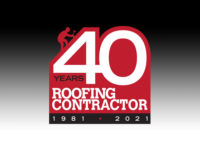RC Helps USA TODAY Understand Metal Roofing
USA TODAY called with questions about metal roofing and here’s what we told them. Are we on the right track?

If there are any cardinal rules in contemporary journalism still being followed (sarcasm detected?) or worth following, not becoming part of the story you’re working on should still be at the top of the list. Granted, that may be more difficult these days with the prevalence of viral videos and clout bestowed upon media influencers given our insatiable addiction to memes, GIFs and the like.
Sometimes, we’re asked to be part of the story, and though unnatural — if deemed appropriate and beneficial to our community of roofing contractors — RC will represent. That was the case recently when USA TODAY contacted us about a new content initiative, USA TODAY Homefront, a set of websites dedicated to articles and information that aim to simplify the homeownership experience for Americans in any market.
Specifically, their team of reporters wanted to drill down into the costs, market positioning and mystique of metal roofing. While we’re neither roofing contractors nor estimators that could — or would ever want to — delve into project pricing, we think we know a thing or two about the metal roofing marketplace through our industry partnerships, recent special section coverage and regular survey data.
You can see the questions and responses USA TODAY did use for their coverage on metal — if you keep scrolling, and scrolling, and scrolling to the end of their report. I also wanted to share some of the details that weren’t presented so that roofers can at least get an idea of what the mainstream national media cares about when it comes to roofing.
And, if nothing else, to see if we’re on the right track to understanding metal’s role in an evolving space.
USA TODAY: What is the value of a metal roof to a homeowner?
RC: The factors we hear most commonly from roofing contractors that have success with metal roofing, or are adding metal to their offerings due to customer inquiries are: longer lifespan, better weathering, architectural specifications, and personal preference/appearance.
The Metal Roofing Alliance (MRA) recently released market research that says metal now covers roughly 18% of the total residential roofing market, with reroofing leading the charge. It was estimated at 14% in 2017. While much of that bump may be due to the increasing severity and frequency of weather events in multiple markets, manufacturers are beginning to really address some of the aesthetic-related concerns contractors hear when it comes to energy efficiency, colors, and curb appeal.
USA TODAY: What are the downsides of a metal roof? Cost?
RC: Metal roof sticker shock over installation costs are a common objection roofing contractors hear, but have become adept at overcoming by instead focusing on the long-term investment and lower maintenance impact on the homeowner. Fears over noise, condensation and moisture, and even trapping heat can often be alleviated with proper education on roof system components, such as decking, insulation, ventilation, as well as installation techniques.
USA TODAY: How does a metal roof compare to other roof materials like asphalt, clay, slate, wood?
RC: Without zeroing in on price, metal roofing is growing in popularity in the residential sector, but is still far behind asphalt. Our annual State of the Industry Survey and Report included questions geared for the homeowner for the first time this year, and well over half indicated asphalt is their preferred roofing material. While that’s strong, it leaves a lot of room for metal roofing to grow. That may help explain why two-thirds of all residential roofing contractors expected metal roofing sales to still rise this year in our corresponding annual survey of roofers.
Clay, tile and wood shakes are still in the marketplace, but are considered a niche specialty for specific roofing projects or tend to have regional appeal.
USA TODAY: What tips do you have for finding a metal roofing contractor?
RC:
- Name recognition is important, but can also be deceiving. Reviews on websites and social media matter, and good roofers are problem solvers at heart with good communication skills. Reviews that focus on reliability, transparency and responsiveness are just as important as expertise these days.
- If you’re new to metal, than experience and education matters, and perhaps not in the traditional sense. Metal roofing systems are not like traditional shingle roofs, and having contractors with installation experience can make all the difference. Part of that experience is also recognizing the homeowner needs to be educated on the roofing process, system components and expectations from the start.
- Involvement in statewide and regional roofing associations can also be a good barometer of contractors with good reputations and access to the latest tools, safety regulations and training.
USA TODAY: How can homeowners avoid roofing scams?
RC: It comes down to education. While the roofing industry has done a lot recently to improve the professionalism and image of roofers as a whole from the inside, there are unsavory contractors that take advantage of people and do the industry harm from the outside. Homeowners need to do their own due diligence on insurance laws, which are frequently changing depending on the state, and they should also look into local permitting requirements before signing a contract. If a roofer isn’t prepared to discuss either during their sales presentation, or doesn’t have a payment plan for financing the job, consider it a red flag.
Did we get it right? Respond in the comments with what you’d add.
Looking for a reprint of this article?
From high-res PDFs to custom plaques, order your copy today!






